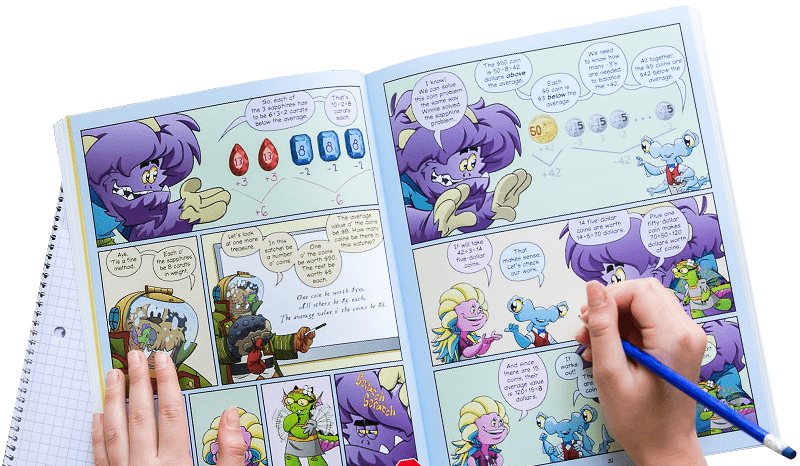Pig
The more times you roll the die, the more you add to your score. But if you roll a 1 you lose it all.
Instructions
Pig is a game of fortune and misfortune, luck and loss, courage and caution! And also addition. Each player needs their own score card. Write your name at the top of your score card.

Then, take turns. On your turn, roll the die as many times as you like. If you roll a 2, 3, 4, 5, or 6, add that to your total, crossing off the previous total as you go.

But if you roll a 1, you lose all your points for that turn, and your turn is over!

You can choose to "hold" at any point during your turn. This means you stop rolling and circle your current total. If you roll a 1 before you hold, you lose all of your points for the turn. In that case, write your previous total and circle it.
Circling your number at the end of each turn is important because if you roll a 1, you need to know what your previous total was.

Each time you roll the die you're taking a risk. You want to increase your score by continuing to add to it, but you know that you may roll a 1 and lose everything you've gained on your turn.
The first player to reach a target number wins. A good target number is 50, but lower numbers work well for students just learning to add.

Don't forget: it's Beast Academy Playground, not Beast Academy Study Hall. Change the rules, be silly, make mistakes, and try again. The Variations and Learning Notes are here for you if you want to dive deeper, but not all of them apply to learners of every age. The most important thing is to have fun.
What do you think of this activity?
We're always looking to improve. Submit your feedback to us below.
- die
- paper
- pencil
- addition
- counting
- probability
- strategic thinking
- MP1
- K.CC.A.3
- 1.OA.C.6
- 1.NBT.C.4
- 2.OA.B.2
- 2.NBT.B.5

Ready to level up?
Keep problem solving with Beast Academy’s full math curriculum for students ages 6–13. Check out our captivating comic book series and immersive online platform.
LEARN MOREBring problem-solving to your classroom
Keep your entire class engaged with a full book and online math curriculum, for students ages 6–13. 98% of teachers say they’re satisfied with Beast Academy.
LEARN MORE



Ready to level up?
Keep problem solving with Beast Academy’s full math curriculum for students ages 6–13. Check out our captivating comic book series and immersive online platform.
LEARN MOREBring problem-solving to your classroom
Keep your entire class engaged with a full book and online math curriculum, for students ages 6–13. 98% of teachers say they’re satisfied with Beast Academy.
LEARN MORE
Sign up to be notified when new videos are released.














































